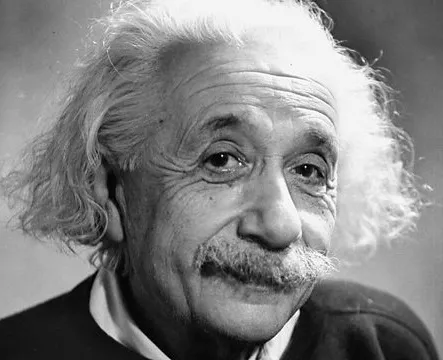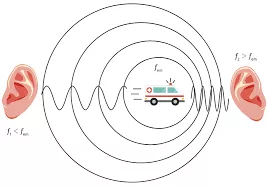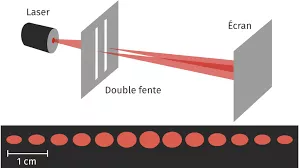Metamaterials with a low refractive index shed new light on the foundations of quantum mechanics. In physics, as in life, it is always good to look at things from different angles. Since the early days of quantum physics, the way light moves and interacts with the matter around it has mainly been described and understood mathematically through the prism of its energy. In 1900, Max Planck used energy to explain how light is emitted from heated objects, a fundamental study that laid the foundation for quantum mechanics. In 1905, Albert Einstein used energy to introduce the concept of the photon.
But light has another, equally important quality: its momentum. And if constrained, light begins to behave in very interesting ways. An international team of physicists led by Dr Michaël Lobet, Research Associate at the Harvard John A. Paulson School of Engineering and Applied Sciences (SEAS) and Lecturer at UNamur, and Professor Eric Mazur, Balkanski Chair of Physics and Applied Physics at SEAS, is re-examining the foundations of quantum physics from the point of view of momentum. The researchers investigated what happens when the momentum of light is reduced to zero.
Every object with mass and speed has momentum - from atoms to bullets to asteroids - and momentum can be transferred from one object to another. A gun recoils when a bullet is fired, because the momentum of the bullet is transferred to the gun. On a microscopic scale, an atom recoils when it emits light because of the momentum acquired by the photon. Atomic recoil, first described by Albert Einstein when he wrote the quantum theory of radiation, is a fundamental phenomenon that governs the emission of light.

But a century after Planck and Einstein, a new class of metamaterials raises questions about these fundamental phenomena. These metamaterials have a refractive index close to zero, which means that when light passes through them, it does not travel like a wave in phases of peaks and troughs. Instead, the wave is stretched to infinity, creating a constant phase. When this happens, many typical quantum mechanical processes disappear, including atomic recoil. Why does this happen? Again, momentum. In these so-called low refractive index materials, the momentum of the light becomes zero and when the momentum of the wave is zero, and strange things happen.

As if breaking one of Einstein's rules wasn't enough, the researchers also broke perhaps the best-known experiment in quantum physics, the Young's double slit experiment. This experiment is used in classrooms around the world to demonstrate particle-wave duality in quantum physics - showing that light can exhibit both wave and particle characteristics.
"Fundamental radiative processes are inhibited in three-dimensional materials with low refractive indices," explains Michaël Lobet. "We found that the recoil momentum of an atom is prevented in materials with a refractive index close to zero and that no momentum transfer is allowed between the electromagnetic field and the atom. We also found that no Doppler effect occurs in these materials.

In a given material, light passing through two slits produces two coherent wave sources that interfere to form a bright spot in the center of the screen with a pattern of light and dark fringes on either side, called diffraction fringes.
"When we modelled and numerically calculated the double Young's slit experiment, it turned out that the diffraction fringes disappeared when the refractive index was reduced," said co-author Dr Larissa Vertchenko, from the Technical University of Denmark.
"As can be seen, this work questions the fundamental laws of quantum mechanics and probes the limits of wave-corpuscle duality," added co-author Dr Iñigo Liberal, from the Public University of Navarra in Pamplona, Spain.
While some fundamental processes are inhibited in materials with a refractive index close to zero, others are enhanced. Take another famous quantum phenomenon: the Heisenberg uncertainty principle, better known in physics as the Heisenberg inequality. This principle states that you cannot know, with perfect accuracy, two characteristics of a particle at the same time, namely the position and the velocity of the particle. The more you know about one, the less you know about the other. In materials with a low refractive index, you know with 100% certainty that the momentum of a particle is zero, which means that you have absolutely no idea where the particle is at any given time in the material.

"These new theoretical results shed new light on photonics with a refractive index close to zero from the point of view of momentum," explains Prof. Eric Mazur. "They provide a better understanding of light-matter interactions in low-index systems, which may be useful for laser and quantum optics applications.
This research could also shed light on other applications, including quantum computing, light sources that emit a single photon at a time, lossless propagation of light in a waveguide, etc. The team intends to revisit other fundamental quantum experiments in these materials. After all, although Einstein did not predict materials with an index of refraction close to zero, he did stress the importance of momentum. In his seminal 1916 paper on fundamental radiative processes, Einstein insisted that, from a theoretical point of view, energy, and momentum "must be considered on a completely equal footing, since energy and momentum are related in the closest possible way".
"As physicists, it is a dream to follow in the footsteps of giants like Einstein and to push their ideas further," says Michaël Lobet. "We hope to provide a new tool for physicists to use and a new perspective that could help us understand these fundamental processes and develop new applications.
